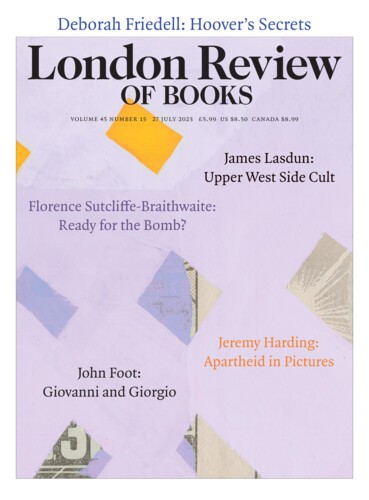While travelling between Cannara and Bevagna, around the year 1200, St Francis saw a ‘great multitude’ of birds in the trees at the side of the road. He told his companions to wait while he went to ‘preach the good news to my little sisters, the birds, over there’. On hearing his sermon, the birds opened their beaks, spread their wings and bent their necks in reverence. They were on to something. There is much to adore in the life and legend of Francis. He wrote poetry, tamed a wolf, received the stigmata on a mountainside, and if you love a kitsch Nativity figurine, you have St Francis to thank. He was a poor scribe and a worse artist, but great works have been made in his name, by Botticelli, El Greco, Caravaggio and Mickey Rourke (who took the title role in Liliana Cavani’s Francesco).
The National Gallery’s St Francis of Assisi (until 30 July) opens with an Anthony Gormley figure in dull metal. It has outstretched arms and five slits in its casing to signify stigmata. The sculpture’s shapeless legs, mitten-hands and odd pubic area may not move everyone, but it captures something very Franciscan – the wonder in the ordinary, or the unlovely. Francis was the son of a prosperous cloth merchant, but renounced his wealth to live a life of sacred poverty, founding an order that focused on itinerant preaching. The Franciscans wanted to be outdoors, among their flock, in all weathers. In the Fioretti di San Francesco – a compendium of anecdotes recorded in the 14th century – we hear that on approaching the house of Santa Maria degli Angeli in Assisi one night, Francis told his companion, Leo, that should they be refused lodging, beaten, insulted and turned out in the snow, it would be the definition of ‘true and perfect joy’.
According to Thomas of Celano, Francis wanted to ‘observe the holy Gospel in all things and through all things’. In 1223, he constructed a Nativity scene, complete with manger, ox and ass, to accompany a Christmas mass in the town of Greccio. The congregation were to meditate on the ‘hay’ where Jesus ‘had been placed’. No matter how ordinary an object, it could be a stimulus to devotion – a means to connect with the human Christ. ‘People came and were filled with a new joy … the woods rang with the voices of the crowd.’ Greccio was made a new Bethlehem. This focus on the frailty of the Christ child, on the itchy hay, the smelly ass and the ‘inconveniences’ of Jesus’ ‘infant needs’, became a popular form of devotion in medieval Europe, fostered by the efforts of the Franciscans.
It is fitting, then, that some objects survive that connect us to the human St Francis. Francis’s patched habit and hemp belt, which belong to the Friars Minor of the Basilica of Santa Croce in Florence, are on display in the show in a gilded framed box, lined with an incongruous red silk – ironic for a man who threw off his rich garments (as we see in a panel by Sassetta in one of the show’s first rooms). An equally unlovely object is a little scrap of parchment, not much bigger than a credit card, known as the Assisi Chartula. It was written by Francis for Leo in a boxy, unpractised hand. On one side are two blessings and a T-shaped ‘Tau’ cross, emerging from the mouth of what is best described as a man-doodle, with stubble and cartoon hair. (The catalogue describes it as an ‘eccentric rendition’ of the head of Adam.) Leo, an attentive editor, added explanatory notes in red, indicating that this text-image was made by Francis’s own hand. It’s another delicious irony that the facsimile of the Chartula is displayed in the same room as Botticelli’s St Francis of Assisi with Angels (c.1475). Here Francis appears on a marble ledge against a ‘diapered’ (i.e. pierced) gold ground, a rich red gesso under-layer visible in some places. In candlelight this painting would have shimmered. A choir of angels surround Francis, their delicately coloured robes fluttering in a celestial breeze. It’s a painting of splendid, gorgeous intricacy, which would have surprised Francis, with his preference for simple and rustic things. He might have felt a similar sense of surprise at his depiction in some Counter-Reformation images, such Caravaggio’s St Francis of Assisi in Ecstasy (c.1595), which shows a hunky Francis being embraced by an angel, or Murillo’s bombastic, monumental St Francis Embracing the Crucified Christ (c.1668). There, Francis is seen clasping Christ, one of whose arms is nailed to the Cross, while the other is tenderly draped around the saint, whose upturned face is inches from the wound in Christ’s naked torso. These paintings have inspired many feelings of which their subject might not have approved.
Stanley Spencer’s St Francis and the Birds (1935) is more Franciscan. It shows a bulbous Francis in a ramshackle farmyard, overgrown with ivy. A group of chickens are gathered at his feet and on the buckled tiles of a nearby rooftop are starlings, thrushes and woodpigeons. The birds are turned towards Francis, whose mangled, misshapen arms are outstretched in cruciform. His back is turned, his eyes uplifted; what ecstasy may be written on his face is not for us to see. There are small stones and stalks of hay at the chickens’ feet. When the painting was shown at the Royal Academy’s summer exhibition in 1935, Spencer was asked to withdraw it. He resigned his membership of the academy, perhaps feeling that to be out in the cold was true and perfect joy.
Send Letters To:
The Editor
London Review of Books,
28 Little Russell Street
London, WC1A 2HN
letters@lrb.co.uk
Please include name, address, and a telephone number.


